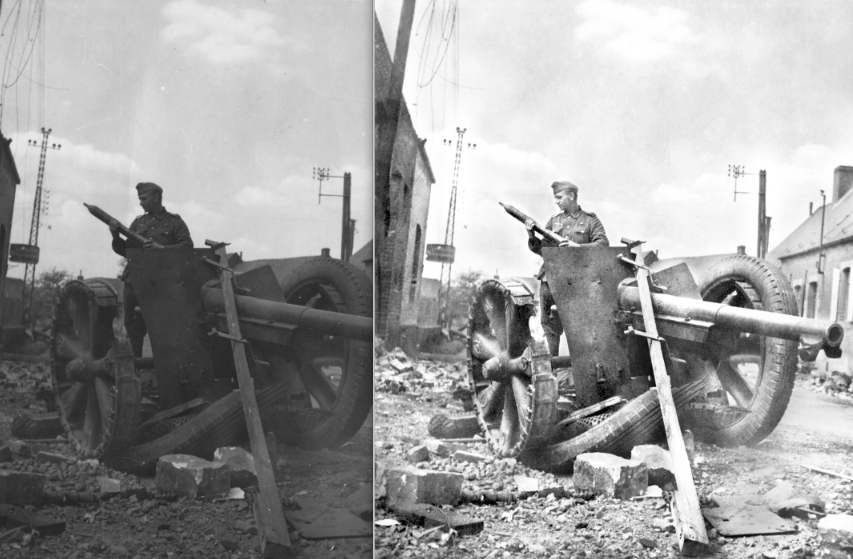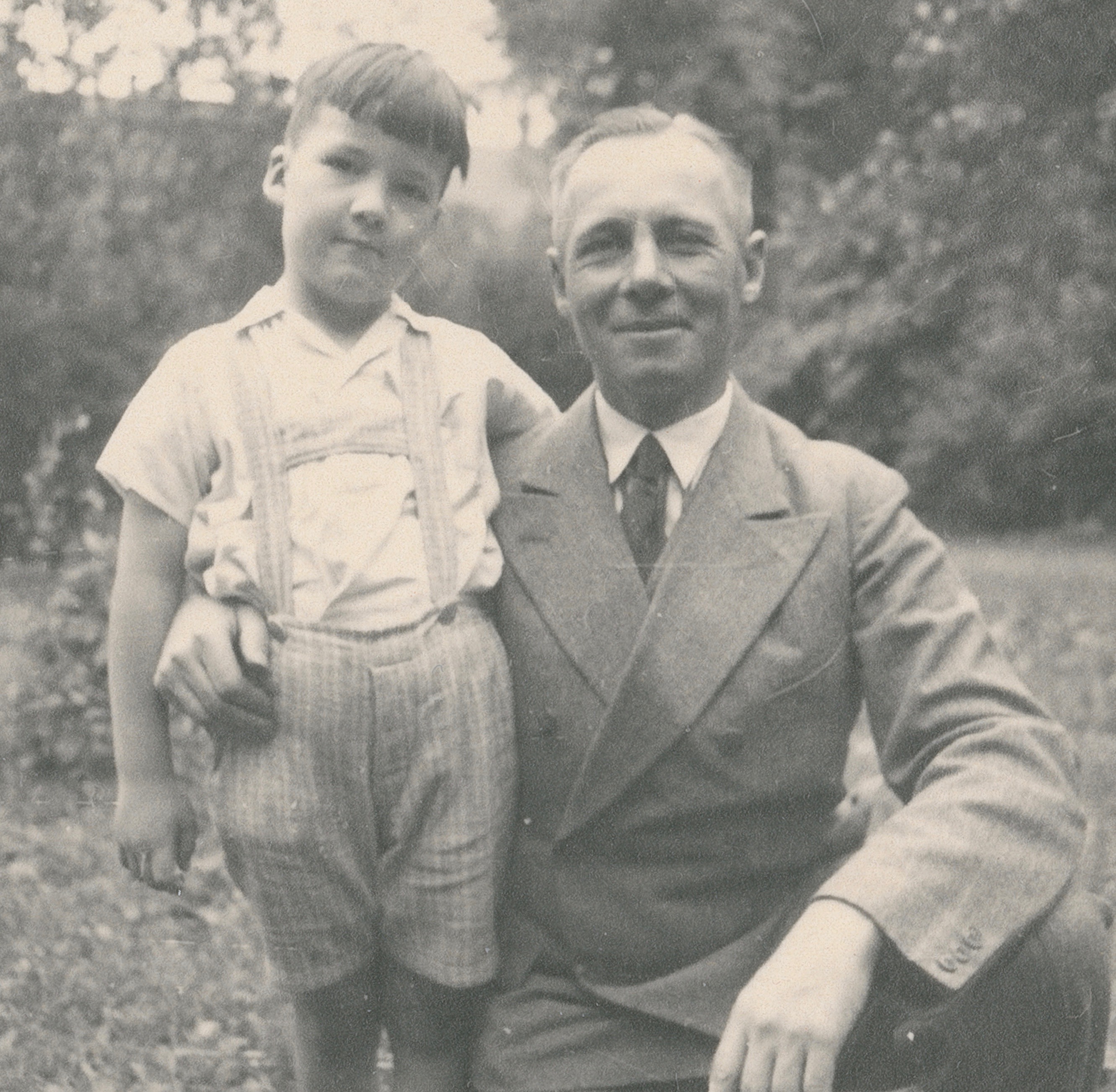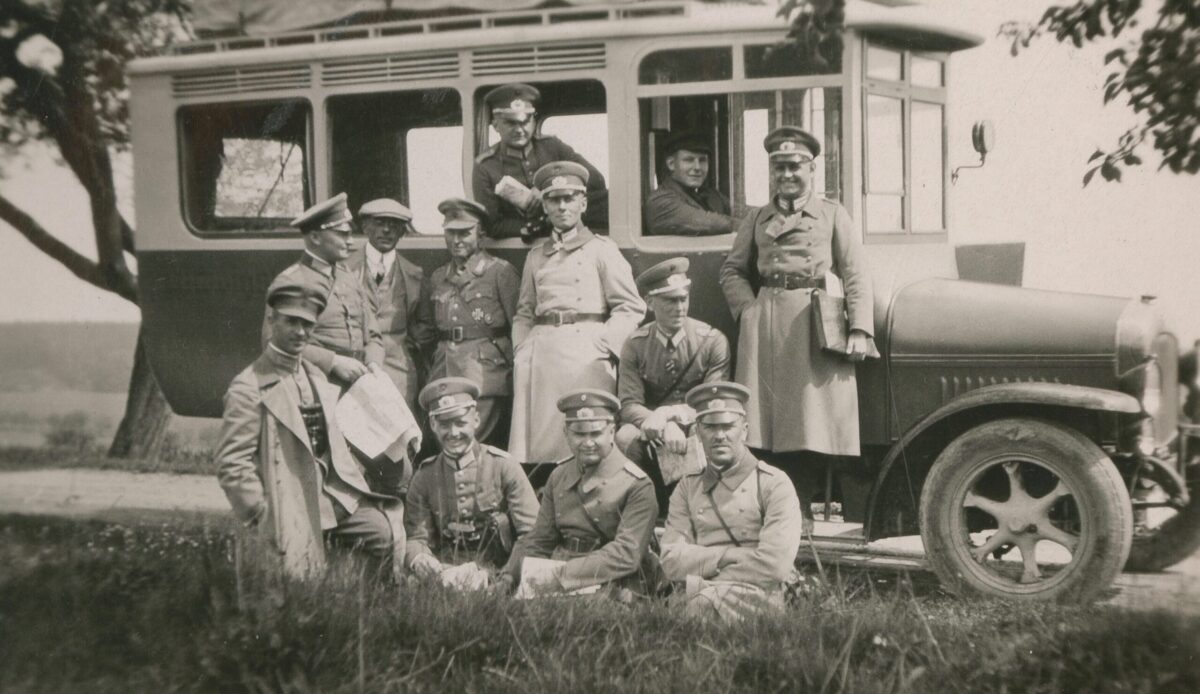When I first discovered the war photography collection of Field Marshal Erwin Rommel in the National Archives as a teenager, I knew I had made an extraordinary discovery. Over many years, I researched and digitally restored the photos. In 2017, I had an opportunity to donate copies of these photos—confiscated by the U.S. military in 1945—to Rommel’s estate in Germany. In a gesture of thanks, German archivists shared photos with me from Rommel’s private family photo albums in their collection. These rare images capture the famed soldier’s life away from the battlefield and give a personal look at the Desert Fox.
Finding a Lost Collection
I found the Rommel photo collection at the National Archives in Washington, D.C., while researching a World War II fiction book I planned to write. Senior archivist John E. Taylor, legendary for his expertise in military history, first brought it to my attention. Afterwards I set out to learn more about the photos and researched them for my Honors thesis during my college years.
I wrote to Rommel’s son, Manfred, to inform him of the photo collection’s presence in Washington. According to postwar accounts by Manfred, his father’s war photography was confiscated from the family’s home by two American GIs and never returned. I was sure these were the same photos and sent copies to Manfred for verification. He confirmed they were his father’s photos and recommended they be given to a history museum in Rommel’s home region of Germany, where Manfred had donated his father’s estate. At that time, I was still a college student and had not yet digitally restored the images or examined the collection in its entirety. Manfred passed away in 2013 after a long illness.
Repatriating Rommel’s Photos
I moved to Germany in late 2016 as a journalist. After arriving, I realized I had an opportunity to give copies of Rommel’s photos to the museum in person. By then, I had already written and published my “Erwin Rommel: Photographer” book series, in which I analyzed and digitally restored the photos for readers. I contacted the Haus der Geschichte Baden-Württemberg, the local history institution Manfred had recommended. After asking the archivists if they were interested in seeing the photos, I arranged a meeting to explain what the photos were and how I’d found them. During this meeting, I showed them copies of my published books with digitally restored versions of the images.

The archivists recognized the images as matching reels left behind at Rommel’s house. They were grateful that I had approached them and were interested in having digital copies of the photos for their collection. I presented the museum’s photo archive with a hard drive containing copies of all Rommel’s images I had in my possession, for the educational benefit of anyone who wished to view them. This was the first time Rommel’s photo collection had been reassembled in Germany since the end of World War II.
Afterwards, as a way of expressing their thanks, the archivists allowed me to obtain high-quality images from Rommel’s private family photo albums from his estate. I did not know these private albums existed; the archivists made them available to me since they knew I was writing a book series.
Rare Views of Rommel
Rommel’s private photo albums demonstrate that he was a meticulous and detail-oriented man who paid great attention to documenting things around him. He apparently created the photo albums himself; all photos tend to be arranged chronologically with labels and dates. Some pages are captioned in his handwriting. He collected and arranged images of many places where he was stationed during his military career. This painstaking approach is very much in keeping with his style of documenting his actions during World War II.
Many of the images confirm what we already know about Rommel—that he was an avid outdoorsman interested in almost every pursuit related to nature. Photos from across many years captured Rommel hiking, skiing, swimming, boating, horseback riding, hunting and even building a lodge. Other photos indicate early interests in cars and motorcycles.
There were, however, some visual surprises in the collection. Rommel is commonly perceived as having been a solemn and rigidly unsociable person, with few interests outside of his home life with his wife and son. However, photos in his private albums suggest otherwise.
As a young man, Rommel was a snazzy dresser with a taste for dances and parties. This seems to have continued into his adult life. There are numerous lively photos of Rommel at socials and military balls, as well as photos he took and saved of fellow soldiers and their girlfriends celebrating at fests and carnivals. In contrast, many photos of Rommel posing with his wife, Lucie, appear staged and awkward, suggesting a lack of warmth between the couple. These discoveries suggest Rommel’s reputation as a homebody was unfounded; he appears to have been a gregarious person with an active social life.
Rommel was not uninterested in family life, however; numerous photos exist of him on family vacations and visiting with his mother, siblings and cousins. He appears to have enjoyed spending time with his children—his daughter, Gertrud, from a previous relationship, and his son Manfred from his later marriage.

One of the least-known aspects of Rommel was his involvement with World War I veterans. Photos indicate he spent much time with former battle comrades and was actively engaged in their lives. Rommel’s experiences in World War I and that conflict’s affect on his life is the topic of the next book in my “Erwin Rommel: Photographer” series.
One of many things I learned from this experience is the value of repatriating material lost in wartime. It is amazing what clarity can be achieved when history, torn apart by war, is reunified in peace.
Photos I obtained from Rommel’s private albums are published in “Erwin Rommel: Photographer: Volume 4, Personal Encounters,” along with other photos I took during research and travel in Germany and Austria.





